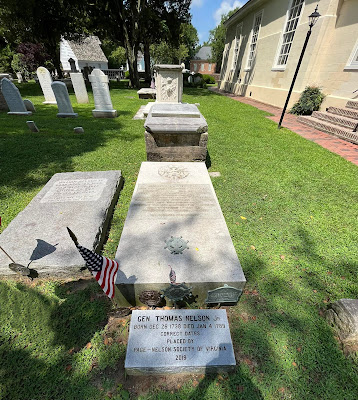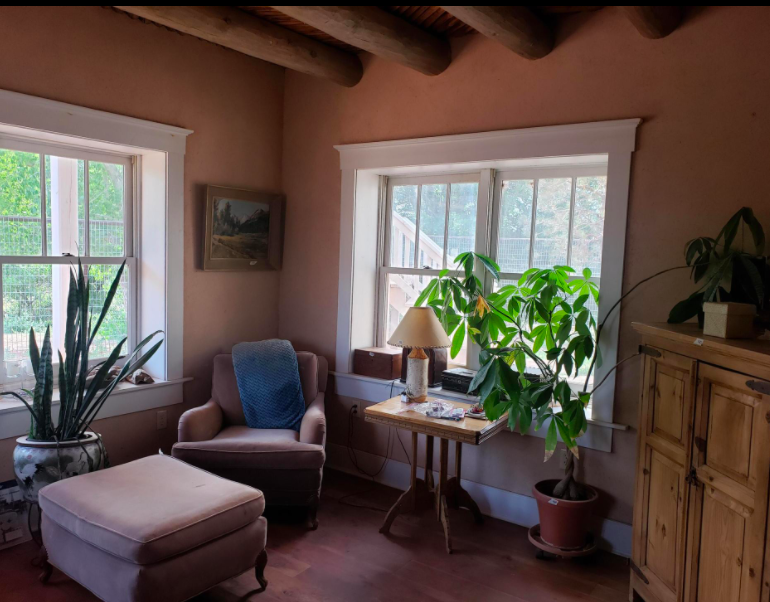My Father, Felipe Montoya Fajardo, was a woodworker. He loved wood the way a quilt maker loves fabric. I've always assumed his love of woodworking began when he was a young man in the Civilian Conservation Corps, the work relief program that gave millions of young men employment during the Great Depression. In New Mexico alone, more than thirty-two thousand signed up for CCC camps which provided them with shelter, clothing, food and a wage of $30 (equivalent to $1000 in 2022) per month ($25 of which had to be sent home to their families.)
With so many people out of work, there was little demand for traditional arts and a good chance that some of these skills would disappear. The CCC woodworking program created an environment that helped revitalize the tradition. Craftsmen were trained in furniture making, carpentry and carving. My father said he had carved a table and several chairs yet he only ended up with one chair. If you look closely at the photo below, you will see that this chair was hand carved and put together with no nails. I had always cherish this jewel of a chair that was usually covered with paint splotches in my dad's workshop. When I was about 40 and he was 80, I asked him if I could have it. The morning of August 20, 2001 I had a dream that someone had stolen the chair and I woke up in a panic. He passed away that afternoon, at the age of 86. The dream early that morning was very symbolic that he was gone.
 |
| Handmade Chair by Felipe M Fajardo |
After his death, my 3 siblings and I had the surreal experience of going to a funeral home in Amarillo to make funeral arrangements and pick out his casket. As we walked through a room of what seemed like a thousand caskets, there was no question that our father would be buried in the best dark mahogany wooden casket available. He loved mahogany.
As a child, I spent hours in my father's workshop, watching him carefully mixing stains and clamping broken furniture together after I had helped him carefully apply wood glue to the surface. It was his art. His life. When I was really young, I used to go on house calls with him because there were always nice ladies who would serve up cookies and milk while we chatted and watched my dad fix a damaged corner of a dining room table or nightside. I never realized that I was in the early training stages of becoming an artist myself.
It wasn't until about 10 years after my father died that I started researching our ancestry. I immediately learned the origins and meaning of our surname. The surname "Fajardo" was first found in the province of Galicia, Spain in the northwestern corner of the Iberian peninsula. A topographic name for someone who lived by a beech tree or in a beech wood (from Late Latin fagea (arbor) ‘beech (tree)’ a derivative of classical Latin fagus ‘beech’.
 |
| Beech Tree in Spain |
All of a sudden it made sense that my father would be a woodworker. When he was in the Civilian Conservation Corps, he and 4 others also carved the enormous double doors at the Saint Rose of Lima Catholic Church in his hometown of Santa Rosa, New Mexico. I don't have a photo of those doors because they were eventually replaced because they were so heavy that when the wind blew, people would get knocked off of the stairs that lead up to the church. I understand they are now owned by an individual in Santa Rosa.
 |
| Saint Rose of Lima Catholic Church Santa Rosa, NM |
 |
| Christina Fajardo at Saint Rose of Lima Catholic Church Santa Rosa, NM |
Before I was born daddy had a furniture repair company called "F & H Furniture Repair." (Fajardo and Hernandez) My dad repaired the wood and his friend, Oscar Hernandez did the upholstering.
 |
| My brothers Phillip and Gilbert in front of Dad's truck in about 1952 |
 |
| "Fajardo book bought by my father in 1983. |

















































